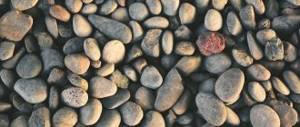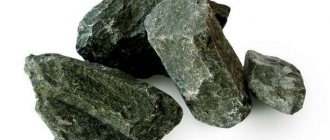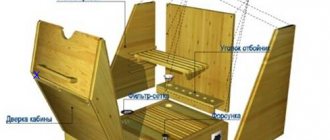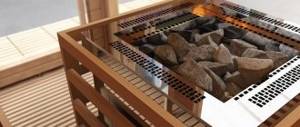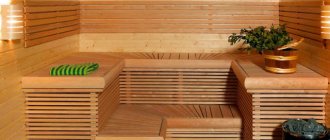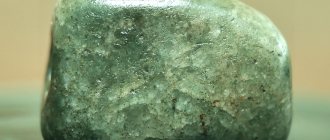Georgia. When thinking about this country, one immediately remembers majestic mountains, delicious wine, unique Georgian cuisine and people with a warm heart. Nature has presented Georgia with many of its gifts.
Among them are the unique sulfur springs on which the famous sulfur baths of Tbilisi were built. They are located in the old city, in the Abanotubani area. They have no analogues in the whole world.
What is hidden in the legend of the sulfur baths?
Like any attraction whose creation goes back centuries, the sulfur baths are associated with a beautiful legend. It is believed that this place, delightful and unusual in its natural characteristics, was once discovered by the ruler, Vakhtang Gorgasali. They say that the king discovered the place where the sulfur baths would later be located in Tbilisi, completely by accident. While hunting, he released his falcon. He chased the pheasant, but scratched it and dropped it into hot sulfur water, where it boiled. According to another version (and there are several of them), the deer, which was wounded by the king, drank water from warm springs and miraculously recovered.
From that moment on, the ruler decided not only to remember the place where the warm springs were located, but also to found a city here, called Tbilisi. Later he opened the famous baths here. By the way, not far from the entrance to this complex, behind the picturesque park named after G. Aliyev, there is a monument in the form of a falcon holding a pheasant carcass in its claws.
A beautiful legend: truth or fiction?
However, as it turned out, this is just a beautiful legend that local residents present to tourists with special pride. The myth was dispelled by archaeological excavations recently carried out in the capital of Georgia. According to these studies, the city itself existed even before the birth of Vakhtang Gorgasali. Its origins are associated with the late Middle Ages.
It turns out that already when the king’s future capital appeared, in the area of the modern sulfur baths there was a huge concrete wall. To confirm this, researchers found an old Roman manuscript in which the modern city was depicted as a fortified settlement called Fillado. Based on historical data, in V-VI the main residence of the head of the locality and the ancient sulfur baths in Tbilisi were located there. The only difference is that in those days the city was called differently.
Sulfur baths in Tbilisi: benefits
Due to the high concentration of hydrogen sulfide in the water, baths have a healing effect on the skin. They accelerate wound healing and help cope with various skin diseases, including acne. A pronounced cosmetic effect is visible after three visits.
Hydrogen sulfide increases the level of oxygen consumption by cells, normalizes the functioning of the central nervous system, and helps normalize the functioning of the heart muscle.
A few words about warm springs
Sulfur baths in Tbilisi are built on warm springs with sulfur-alkaline liquid flowing out of the ground, which has a specific smell of hydrogen sulfide. According to preliminary estimates by experts, the total number of such reservoirs is 31. The most interesting thing is that, according to local residents, you can swim in them all year round. Of course, the water heats up to a temperature of 37 ºС. That is why the place became an excellent foundation for the first modern sulfur baths. From the street they look like stone semicircular structures, reminiscent of an Eskimo igloo. The baths themselves are located underground.
Where are the sulfur baths located?
Finding sulfur baths in Tbilisi (the address of which any taxi driver in the capital knows) is quite simple. They are located in the old city in the Abanotubani quarter, comfortably located on the right bank of the deep mountain river Kura. To visit this place you will have to follow Joseph Grishashvili Street, located in direct parallel with the local embankment, and walk to the Metekhinsky Bridge.
A striking landmark by which you can easily find this attraction is the ancient Metekhi temple. According to local residents, all you have to do from it is cross the bridge over the aforementioned Kura River. This way you will get to the famous baths in just 4-5 minutes. And this is provided that you move on foot. If you prefer to go by car, then the end point of your journey is at the following address: st. Abano, 2.
You can also go to the sulfur baths in Tbilisi (you can see a photo of this interesting attraction in the article) by public transport. To do this, you need to take one of the buses with the following numbers: 31, 44, 50, 55, 71, 80 or 102 (your choice). And then all that remains is to get off at the stop called “Abanotubani”.
Tbilisi sulfur baths - description and recommendations, personal experience, reviews
According to some sources, in different historical periods there were up to 60 sulfur baths in the city. About 10 complexes have survived to this day, most of them were built during the 17th century. to the 19th century
The area where the best sulfur baths in Tbilisi are located is called Abanotubani. This is a very unusual atmospheric place with a characteristic landscape that is unlike anything else. The main part of the baths is located underground in semi-basements. Only their roofs are located on the surface of the earth - they are round domes made of bricks with small turrets on top.
Through small arched windows, scant sunlight enters the premises. Previously, this was the only lighting in the baths, but today they are fully illuminated with electricity.
- The baths have common rooms, which are divided into men's and women's, and there are individual rooms. The public baths have sections with and without steam rooms, a swimming pool and showers with hot sulfur water and a relaxation room. Individual rooms can be rented for recreation by a group of 2 to 15 people. Each bathhouse has its own set of options; I will discuss each of them in detail below.
- Additional services include rejuvenating peeling with a special “kiso” washcloth, massage, at the entrance you can rent bath accessories, purchase detergents - shampoo, soap in disposable packages, as well as hot tea and other alcoholic and non-alcoholic drinks. Almost all baths have common rubber slippers.
- As a rule, the time spent in all public halls is not limited - you can sit there all day long. The baths are open from 7.00 am to 21.00 pm. Individual rooms in the baths are available around the clock; it is better to make an appointment in advance to be sure to get in.
- There is a strong smell of hydrogen sulfide inside all baths. At first it literally knocks you off your feet, but after 5-10 minutes you get used to it and completely stop noticing it. After the visit, the characteristic smell remains on the hair and body for some time, but then disappears.
- The higher the temperature of the water, the more healing it is. In hot water, hydrogen sulfide is most active; it penetrates through the skin and lungs into the body and has a beneficial effect on it. Before the bath, you need to wash yourself well - through clean skin, beneficial substances are absorbed much better.
- Hydrogen sulfide neutralizes most harmful microorganisms. But if you pay special attention to hygiene, then it is not a bad idea to take into account that the water in the pools is not changed often - as a rule, on the night from Sunday to Monday. Therefore, the best time to visit the bathhouse is Monday morning. In addition, in the morning the water in the pools is often hotter than in the evening. And if you decide to order a bath attendant, then make sure that he takes a fresh washcloth.
- An important recommendation: before visiting the bathhouse, you must remove all jewelry, especially silver. Hydrogen sulfide oxidizes silver, it instantly turns black and then is almost impossible to clean.
Before going to the Tiflis baths for the first time, I conducted a survey among my acquaintances and friends from Tbilisi to find out which one they considered the best. Almost unanimously everyone called the Orbelian bathhouse.
Opinions were divided regarding the second place in the ranking. Some called the bathhouse “King Erekli”, others preferred “Gulo”, several people recommended “Bathhouse No. 5”. Still, there were more votes in favor of Gulo, so I decided to visit her and Orbelianovskaya. Since the common rooms in the baths do not differ much in price and surroundings, I was interested in comparing individual rooms.
Orbelianovskaya bathhouse
It is also called a “motley” or “blue” bathhouse. As soon as you get to Abanotubani, you immediately pay attention to it - it stands out among all the others, both externally and internally. This is the only above-ground bathhouse, similar to an eastern Arabic building, covered with beautiful bluish mosaics. Traditionally, the baths were run by Azerbaijanis, so this design is not surprising.
At the entrance there is a sign with a saying of the great Russian classic Alexander Pushkin, who, after visiting the sulfur baths, said: “I have never seen anything more luxurious than the Tiflis baths.” In addition to Pushkin, Alexandre Dumas once visited this bathhouse, and today two individual rooms bear the names of these famous guests.
This bathhouse is truly the best in terms of service, room design, level of staff and other parameters. If you want to relax in comfort and in a pleasant environment, then this is definitely the place for you. But it is also the most expensive - for 1 hour of visiting this bathhouse I paid 120 GEL (about $47). For one person this is quite expensive, but if you come with a group, the price tag will look much nicer and will be affordable for almost everyone.
The rooms are impressively decorated, using beautiful oriental motifs. The locker room is separated into a separate room and is hermetically sealed. This is important because it allows things to remain dry, which is not the case in other bathhouses. The complex has a spacious, comfortable hallway with upholstered furniture, where you can relax during breaks between the pool.
Unlike other baths, there are no rubber slippers here, but at the reception you can buy disposable ones, their cost is 2.5 lari ($1). Please note that they are quite slippery and uncomfortable to walk on wet floors, so it is better to bring your own slippers. If necessary, you can also get towels, sheets, and buy soap at the reception. The cost is also 2.5 GEL.
The room is very warm, it’s hard to stay in it for a long time, it gets hot and you want to freshen up. The water in the pool is hot, not everyone will be able to sit in it for 15 minutes - I lasted about 12-13 minutes. However, it seemed to me that it was easier to enter this pool than the Gulo bathhouse. Maybe because in the Orbelianovskaya bathhouse the temperature difference between air and water is less.
Guests can enjoy a large and varied menu of drinks and snacks; orders can be made by phone. Prices for soft drinks are slightly higher than the city average - about $3-4. I can’t say anything about the quality of the food - I didn’t order anything. Conveniently, they call you 15 minutes before the end of the session and warn you about it.
Gulo
The entrance to this bathhouse is located a little to the side, it is inconspicuous and fewer tourists visit it. Therefore, as a rule, it is easier to get here during the hot season. The bathhouse is famous because it was visited by the British singer Sting during his visit to Georgia. Ask the administration what room he stayed in and if you are lucky, you will be able to book exactly that one.
One must assume that if Sting had arrived now, it is unlikely that he would have been taken to this bathhouse. But in those years, the Orbelian bathhouse was under reconstruction and Gulo was one of the best. Surely, the successful secluded location and convenient access to the building also played in its favor.
Prices in Gulo are much more affordable than in Motley, and in order for the comparison of these two baths to be correct, I chose one of the best and most expensive rooms in Gulo. A hall with two pools, hot and cold, cost me 70 lari (about $26).
Almost immediately upon entering, it became clear that this bathhouse was noticeably inferior to the mid-level room in Pestraya (Orbelianovskaya). The room itself is quite spacious, but its decoration is rather modest, despite the presence of a beautiful mosaic panel on the wall behind the pool.
The locker room and the hall in it are one room. If you come with a group of friends of different sexes, then changing clothes will not be very convenient. The only separate room is the toilet, but it is located at the end of the room, next to the pools, and you will have to go to it in street shoes.
If you visit the bathhouse during the cold season, the room may be quite cool. When I visited this bathhouse, it was the beginning of December, the air temperature outside was about zero degrees, and the windows in the domes were broken. The cold outside air was blowing into the room, making the pool water feel very hot. It took at least 3 minutes to completely submerge in the water. At the same time, very sharp sensations arose - the body seemed to be electrocuted, the skin was covered with goosebumps. Re-entering the pool is much easier.
But it was much easier to stay in the pool for the required 15 minutes than in the Orbelian bathhouse. After the hot water, it was very pleasant to immediately move to the adjacent pool with cold, refreshing water. Surely in the summer it is much easier to enter a hot pool with hydrogen sulfide water, and it is even more pleasant to plunge into a pool with cold water.
Bath accessories can be purchased as a set, which includes a towel, sheet and shampoo. Cost – 5 lari (about $2). There are general rubber slippers inside.
After visiting your room, you can relax in the common lounge on comfortable soft sofas. If necessary, you can cool down, dry your hair, drink tea or water. In the cold season, this is very convenient, since immediately after a bath it is not a good idea to go outside while steaming.
Bath of King Erekle
This bathhouse is located opposite Orbelianovskaya, behind the bridge. There are only 4 rooms, each with a swimming pool. But the interior decoration of the rooms in the “Tsar Erekle” bathhouse did not impress me - there was something elusive Soviet in their design. Therefore, I would put it in third place in the ranking of the best baths in Tbilisi.
The undoubted advantage of these baths is the prices. Here they are much more democratic than in the two described above, but the interior and decoration of the rooms are very modest. If you don’t want to overpay for large rooms and the ambience in the form of marble walls with mosaics is not important to you, and at the same time you don’t want to go to shared rooms - feel free to go here. The room will cost you 30-50 lari ($12-19).
Bathhouse No. 5
One of the most famous, mainly because it is cheap and convenient. It has a large common room, 2 suites and 5 private rooms with swimming pools. The bathhouse itself is divided into the sulfur bathhouse 5 and the “VIP bathhouse”. Separately, there is a regular sauna and a massage table, the cost of a massage is 10 GEL (about $3.5), and you can bargain. For some tourists, the bathhouse attendants charge 2-3 times more - don’t be provoked, it’s not worth that much.
The price of staying in a common room is 3 GEL (a little more than $1), individual rooms will cost from 55 to 80 GEL (about $20-30). The rooms are small and not fancy in design. The common room is filled with the flavor of the Soviet era, since which time no significant reconstructions have been carried out in the bathhouse. Women, perhaps, should not come here - there is no sulfur pool in the women's room, only a shower, so exercise will not be complete.
VIP bath
VIP sulfur bath is the most expensive pleasure. It only has a common room, the cost of staying in which is 150 lari per hour (about $57). It is considered the most prestigious, where the city elite and celebrities hang out.
Banya Mirzoeva
This is the only bathhouse in which the women's common room has a pool with sulfur water, it costs 2 lari (less than $1). The bathhouse itself is practically no different from the others, except, perhaps, for the increased size of the common rooms. Located in a shabby building on the street. Grishashvili.
There are several more baths - Sumbatovskaya, Bebutovskaya, Kazennaya, Banya No. 7 (or Boheme), Tsarskaya (or Royal). They are less popular, but each has its own contingent of admirers. Before visiting any bathhouse, you can go in and look around, read the price list in order to make a decision where to stay.
When visiting an individual room, there is no algorithm of actions, but if you decide to spend time in the common room, then the following awaits you. After you have decided on the choice of bathhouse, you need to go inside, go to the ticket office, and buy a ticket. Then you need to go down the stairs to the department you need, where an employee will meet you, check your ticket and show you a locker where you should put all your clothes. The locker is securely locked, the key remains with the bathhouse employee, so you don’t have to worry at all about the safety of your belongings. Then you go to the bath room, where you first take a shower, and only then can plunge into a pool of hot sulfur water. If desired, you can order peeling or massage.
What parts does the bath complex consist of?
The famous baths are a whole complex, occupying an entire block. Moreover, each building has its own characteristics and history. The main thing is that each of them is designed for people with a wide variety of income levels. For example, here you can see the so-called Mirzoev bathhouse. There are other baths in the complex:
- №5.
- VIP.
- "Samepe Abano", or "Royal Bath".
- "Iraklievskaya".
- "Bebutovskaya".
- "Sumbatovskaya".
- "Government".
- “Orbelianovskaya”, “Motley”, or “Blue”.
These are the sulfur baths in Tbilisi. The operating hours are suitable for all citizens, since the complex opens early in the morning and closes late in the evening.
Description of procedures
The algorithm for visiting any bathhouse in Tbilisi (Orbelianovskaya, Tsarskaya or No. 5) is the same. It starts with buying tickets and ends with a good mood. But before going to a particular bathhouse, it’s worth checking whether there are queues so that you don’t have to wait a long time until a place becomes free.
Tickets can be purchased at the box office. There you can also buy the little things you need for the bath: shampoo, slippers, soap.
Simple and spacious bathhouse “Mirzoevskaya”, or “Fantasy”
The “Mirzoevskaya” bathhouse (“Fantasy”) is located a little away from the rest of the buildings of the complex. This relatively old building with slightly worn cladding is located on Grishashvili Street 11. It is in this excellent landmark that there is a common hall for men and women. The cost of such a visit is only 2-5 GEL. With our money it’s 60-150 rubles. This building, importantly, has a small pool with hot sulfuric water. One is exclusively for ladies.
In most cases, sulfur baths in Tbilisi do not contain bathing ponds intended exclusively for a female audience. In other words, there is simply no swimming pool for young ladies in other buildings. The girls have to be content with only a shower. Men are luckier in this regard - for them it is everywhere. But a nice addition is a massage, the cost of which varies from 5 to 15 lari (150-450 rubles).
What you need to know before visiting the bathhouse
- In each bathhouse you can order a massage, the cost of which is no more than 15 GEL. It's common to bargain here.
- For a reasonable fee, you can buy hygiene products (soap and washcloth), but it is better to take personal supplies with you in advance, including a hairdryer, slippers and a towel.
- Tourists and others should know that sulfur causes silver to darken, which is difficult to clean later.
- Be prepared for the fact that the specific aroma penetrates into the skin very quickly, so after the procedures you will be haunted by the smell of sulfur for some time.
- Make sure you change your washcloth if you have ordered a bathhouse attendant, otherwise you will be rubbed in public.
- The hotter the bath, the better the effect of the procedures. In the morning, the temperature in the springs is highest.
- In the sulfur baths, the steam room is not as hot as Russians are used to; the temperature is slightly higher than in the halls with a swimming pool.
- The water in the sulfur pool is changed at night from Sunday to Monday.
- Despite the strong smell in hydrogen sulfide baths, many visitors stop noticing it after some time.
When you have decided on the choice of Tbilisi bathhouse, you need to go inside to the cashier. After paying for the ticket, go downstairs, usually there is a women's section on the right, and a men's section on the left. You can leave your things, including jewelry, in the closet. The key remains with the overseer. After a kind of shower, where you need to wash thoroughly (the best effect on clean skin), you should go to the pool with sulfur water, or relax in the bathroom for individual visitors. Water balance is restored with aromatic tea.
You can find different reviews about sulfur sources. Lovers of ancient architecture will find interesting buildings here; some will enjoy the beneficial massage here; others will experience the healing effects.
Sulfur bath No. 5: the atmosphere of the Soviet era
The most famous building of the entire complex. And if other buildings changed their names several times, this building retained it. It is a wonderful reminder of the Soviet era. So, next to the entrance to the premises, which is visible from the side of Heydar Aliyev Square, there is an unusual sign indicating the year 1926. It is believed that No. 5 is a budget holiday option that the average local resident or tourist with a low level of income can easily afford. The price of staying here varies from 150 rubles (common room) to 2400 rubles. (separate cabins).
This bathhouse, located on Abanotubaniya Street, has separate women's and men's rooms, as well as personal rooms with different hourly prices and functionality. No. 5 is open every day except Monday (this is the day off). Other sulfur baths in Tbilisi operate on a similar schedule. Opening hours: from 8 am to 10 pm (common rooms are open), and the rooms welcome guests of the complex around the clock.
Bathhouse No. 5
Equipped during the Soviet era, it retained the flavor of that time and the historical sign . The name attracts tourists expecting vintage style and budget prices. This is partly true: half of the bath complex is common rooms (for women and men).
Individual rooms differ in the degree of comfort and, accordingly, in prices. Prices in the general department start from 4 GEL per hour in the women's department and 5 in the men's department. Cabinets for 100, 130 GEL. We have our own “Pushkin number”.
There are opportunities here to undergo the necessary wellness procedures (traditional rubbing with a mitten 10 GEL, improved 20 GEL), there are options with additional services and beautiful decoration, but for fans of the luxury style, within the once common complex there are separate rooms with independent entrance, connected with “Bathhouse No. 5” service passages.
The second part of the bath complex is better known as the VIP zone. If you walk along the embankment to Aliyev Square, you will see the entrance to bathhouse No. 5. A separate entrance to the bathhouse for special guests is nearby.
Bath VIP
This room, which is the only spacious room with a swimming pool and sauna, has been renovated in an elite manner. They monitor hygiene very carefully, although it is known that water with hydrogen sulfide itself has a strong disinfecting effect. Many additional amenities are provided.
These bizarrely shaped structures are the roofs of bathhouses. You can walk between them
VIP bath: steam room with chic and sparkle
This bathhouse, as its name suggests, is suitable exclusively for people with high incomes. It is considered the most expensive and elite, since a stay in it costs from 150 lari (450 rubles) per hour. But despite this, she is very popular. There is only one common room in the font, which, according to local residents, is often visited by the Georgian patriarch himself. You can see the bathhouse directly from the embankment, where it is adjacent to a rather large hotel building. Like No. 5, it is located on Abanotubanii Street, and other sulfur baths in Tbilisi are also located there. You can hear only the most positive reviews about this building. This is due not only to the high price and level of service, but also to the celebrity guests who regularly come here.
Orbelianovskaya bathhouse
This bathhouse is most often called motley. It is decorated with mosaics and is very similar to another Tbilisi building - a madrasah. “Blue” and “Pushkinskaya” bathhouse are also about her .
After reconstruction, the condition of the premises is very good; the inside is also decorated with nice tiles. The cheapest private cabin (plunge) costs 50 GEL and is suitable for one or two people. Separate rooms for 100, 130, 150 GEL per hour. Elite apartments – 300 GEL per hour. The water changes constantly, the temperature is about 37 degrees. Reservations can be made on the website chreli-abano.ge.
Quote from Alexander Sergeevich Pushkin on the walls of the baths
The Orbelian bathhouse was very popular in the nineteenth century. It is believed that Alexander Pushkin and Alexandre Dumas visited it . The Russian poet left an enthusiastic review of his visit. He argued that “neither in Russia nor in Turkey there is anything more luxurious.” Both he and the father of the three musketeers were most impressed by the special Tiflis massage and peeling.
Today, the massage, which is offered to each visitor in the Orbelian baths for 10 GEL, is symbolic in nature and serves as nothing more than an addition to the peeling procedure.
“Iraklievskaya”, or “Bath of King Irakli”
The Iraklievskaya bathhouse, which is considered one of the oldest buildings in the complex, was originally called VIP. However, over time this was forgotten. And immediately after privatization, the building was renamed and also received a separate entrance. You can reach it by following the sign, on which it is simply called “Sulfur Bath”. It has four small rooms with different prices and focus: from 10 to 50 lari (300-1500 rubles).
Bathhouse "Bakhmaro"
Other names are “Gulo” or “garrison bathhouse”. In Soviet times, it was intended for both personnel and officers and generals . Today it consists of five separate rooms. It was the common room for soldiers that today became the basis for the most expensive elite room, completely changed after a major renovation. This number can be viewed, but it is expensive to order (200 GEL). However, if you have a large company , this option is worth considering. The hall can accommodate up to 15 people.
The level of comfort and prices in other rooms vary, but all have been well renovated. Prices from 30 to 200 GEL. For a group of 4 people, rooms usually cost 80 GEL. To get to Gulo, you can go through the roof of the bathhouse of King Heraclius.
Other baths of the complex
“Bebutovskaya”, “Sumbatovskaya” and “Kazennaya” - these baths were built around the beginning of the 17th century. “Orbelianovskaya”, “Motley”, or “Blue” - one font, but only with a different interpretation of its name. This is a very bright and unusually beautiful building, created in a certain Turkish style. It resembles the palace of the Sultan and immerses visitors in the world of amazing oriental culture. The cost of visiting the common room there will cost you 4-5 lari (120-150 rubles), and individual booths - 20-50 lari (604-1500 rubles).
Sulfur baths and beautiful steam on Lake Lisi
In addition to the old city, there are sulfur baths in Tbilisi on Lake Lisi. This is a more modern version of a balneological resort with an unusually pretty embankment, park and bike path. There is plenty of entertainment here, including catamaran and boat rentals. There is a tennis court, go-karting, and a ropes course for adults and children in this place. You can get to Lisi, for example, by bus No. 29, which will take you from the Technical University metro station to the lake. The cost of a room in a sulfur bath for four people will cost you 50-60 lari (1500–1800 rubles).
A little history
Sulfur baths, or rather sulfur springs, are considered a historical place in Tbilisi and its heart. After all, according to legend, Prince Vagtang Gorgasali, while hunting, released his faithful assistant falcon to catch a pheasant. The birds disappeared into the forest, and when the prince found them, he saw that the caught pheasant had fallen and boiled in hot water.
Rejoicing at such a rare find, he ordered the construction of a bathhouse in this place, from which the city was formed. No one knows whether this legend is true or not, but the sulfur baths definitely became the basis for the construction of the city, which was originally called Tiflis, which means warm in Georgian.
The first memories of the warm city date back to the 4th century. Over the centuries, the baths, like the city itself, were destroyed and rebuilt many times. In addition, they were often renamed, the owner changed, and the name changed.
Today, their appearance rarely changes; they try to preserve their historical heritage. But there is so-called rebranding in the names, so sometimes the baths are called differently.
Back in Soviet times, water from the springs was supplied to houses in some areas of the city and residents used its beneficial properties every day, but now everything is private and paid for.
What are the benefits of sulfur baths?
The benefits of taking sulfur baths are obvious - sulfur improves the condition of the skin, relaxes and restores the entire body, and also treats diseases associated with the musculoskeletal system. However, you only need to immerse yourself in such a bath for 8-12 minutes. Then you can surface, rest and perform several more similar approaches, but no more than four. You can get an additional effect from taking hydrogen sulfide baths by ordering a massage. Its cost is only 10-15 lari (300-450 rubles).
Benefits and harms
There is an opinion that it is enough to visit Abanotubani, and the blues will disappear as if by hand. Hot sulfur water removes toxins from the human body and helps treat various skin diseases. After 3-4 visits, skin problems will become much less, and the effect will be guaranteed.
Hydrogen sulfide penetrates through the skin, lungs, and mucous membranes into human tissues and organs. Under the influence of hydrogen sulfide, small blood vessels dilate and the skin becomes intensely red. Blood circulation in joints, organs and cartilage improves.
Hydrogen sulfide optimizes the processes of the central nervous system, increases the energy resources of cells, accelerates regenerative functions, blood flow and metabolism, normalizes blood pressure and increases oxygen consumption. Georgian baths help relieve the heart muscle and increase periods of its rest.
A visit to the Bath Quarter allows you to relax in your free time and relieve stress after a hard week of work. For tourists, visiting the baths is an excellent opportunity to get to know Georgian culture better and touch its roots.
A study of open sources did not reveal any evidence that sulfur baths are harmful to the human body.
If you follow the rules for visiting the bath and stay in a hot bath for no longer than 8–12 minutes, then the body will only benefit from water procedures

